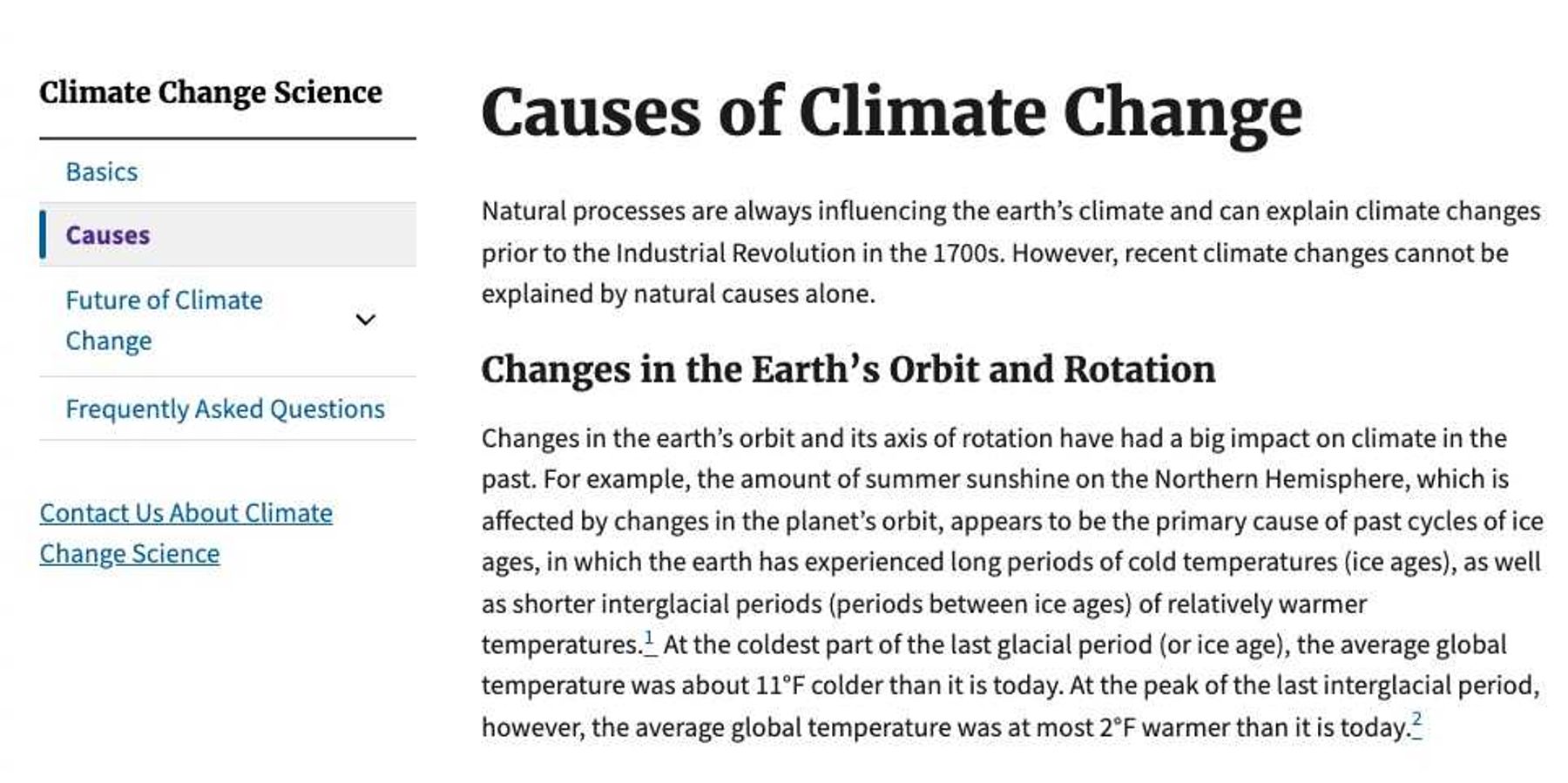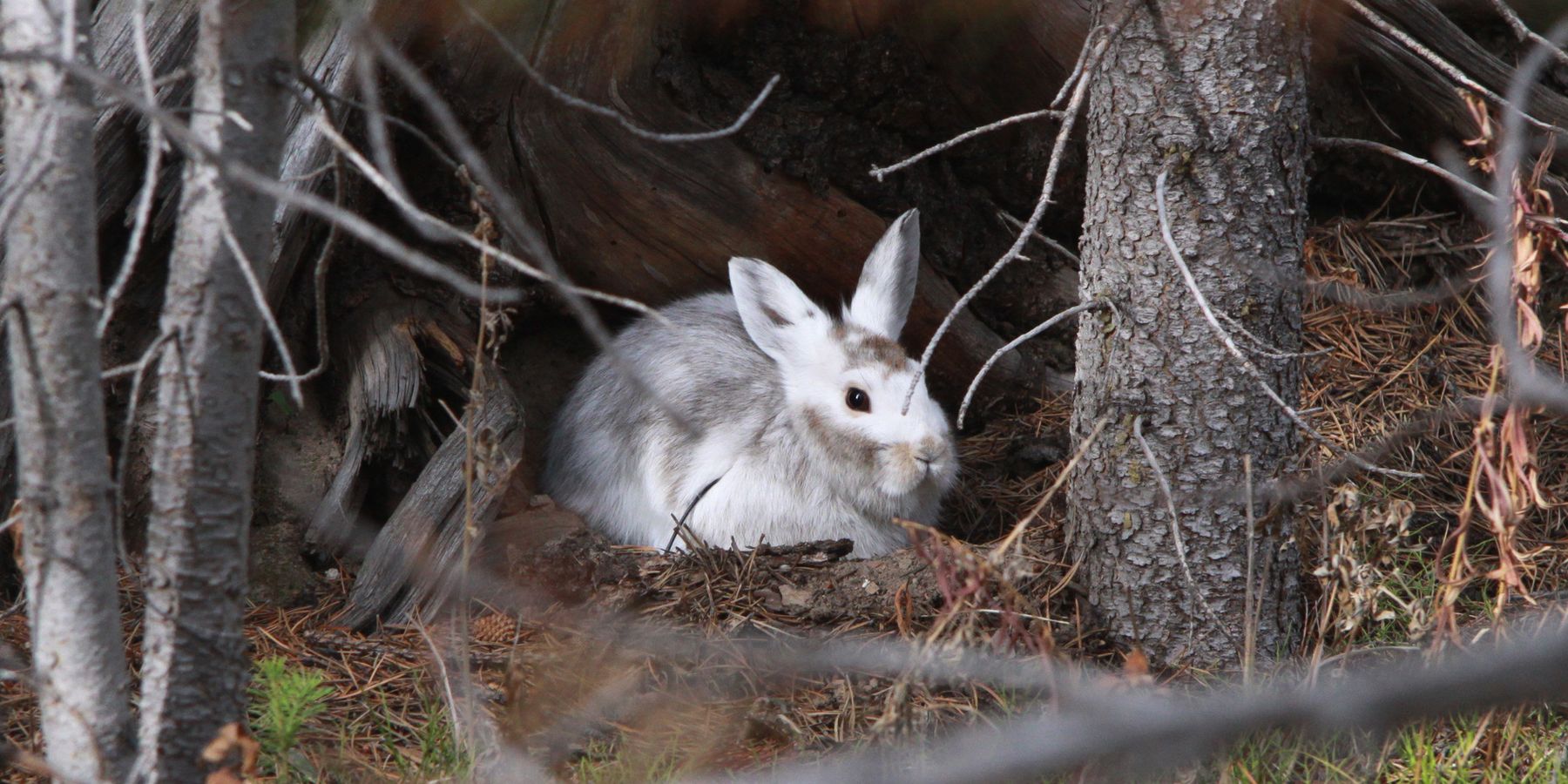
Climate change creates camouflage confusion in winter-adapted wildlife
Twenty-one species molt from brown to white to survive the winter season. But climate change has created a mismatch between their snowy camouflage and surroundings.
A thousand feet above the winter landscape, a golden eagle is on the hunt.
Riding the wind, the bird careens over scrubby contours and rolling hillsides. It's late April and the days are growing longer. The snow melted weeks ago, revealing the dormant vegetation beneath. Suddenly, the eagle spots a shock of white on the brown landscape. The bird swoops, extending its talons toward the bounding white blob.
Here, on the dark earth, the snowshoe hare meets an untimely end.
Across the world's temperate regions, climate change is toying with the survival strategies of winter-adapted animals. Twenty-one species, from lemmings to ptarmigans, cope with the changing of the seasons by molting from brown to white, and back again. This transformation allows the animal to avoid easy detection by predators, such as birds of prey, foxes and lynx, during the harsh winter.
Molting is triggered by changes in air temperature, as well as a baked-in biological response to the predictable change in day length, known as the photoperiod, that occurs at the same time every fall and spring. But snow cover is diminishing due to climate change, with snows arriving later in the fall and melting earlier in the spring. This has created a phenological mismatch for at least half of the species that rely on winter camouflage to make it through the season. Rather than disappearing into their surroundings, their ill-adapted coats are making them stand out—often with fatal consequences.
Such climate-change induced phenological mismatches have been the subject of robust study in recent decades when it comes to hibernation, spring green-up, and migration. But research on the consequences of climate change for winter camouflage is still in its infancy.
In North America and Europe, a growing contingent of researchers is exploring what the future may hold for these vulnerable white beacons as the world grows warmer and snow cover declines.
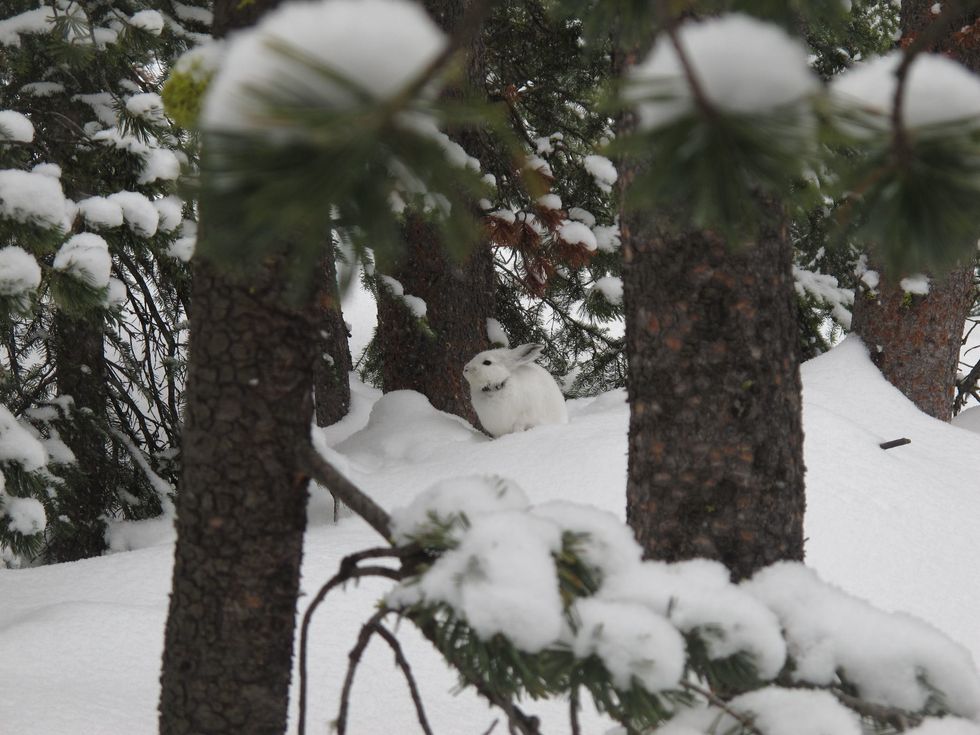
Snowshoe hare (Credit: Scott Mills Lab, University of Montana)
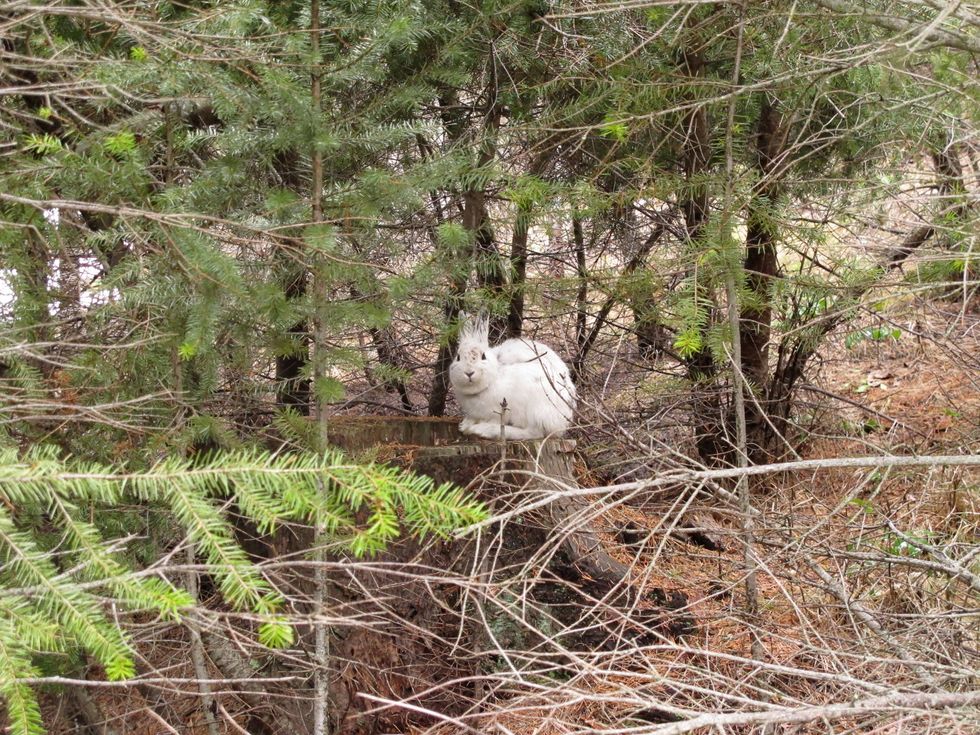
(Credit: Scott Mills Lab, University of Montana)
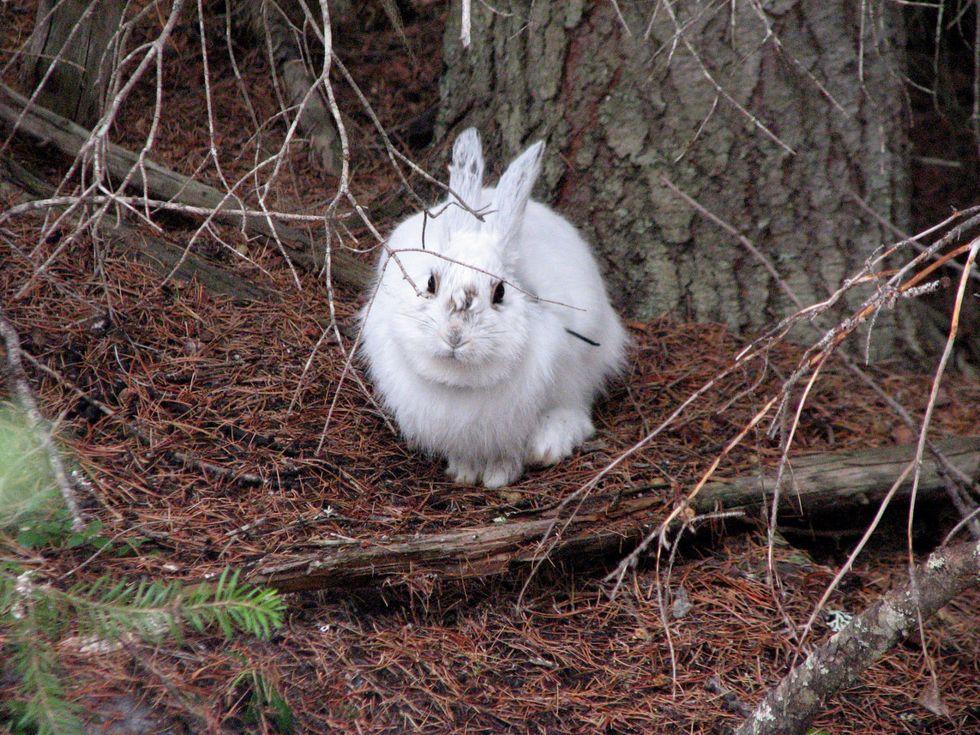
(Credit: Scott Mills Lab, University of Montana)
Survival of snowshoe hares
Of all the winter-white species, the snowshoe hare, Lepus americanus, is the best understood when it comes to camouflage mismatch. That's largely thanks to Marketa Zimova, a biologist and post-doctoral student at the University of Michigan who has dedicated nearly a decade to studying the coloring of the animals.
Snowshoe hares can be found across Canada and in more than a dozen U.S. states, with their range extending as far south as the Sangre de Cristo mountains in New Mexico.
Between 85 and 100 percent of snowshoe hare mortality is already related to predation. To fend off would-be predators, hares stay completely still, refusing to hide or flee until they have no other choice. But when considering a lack of camouflage, this survival strategy is ill-fitting; the hares simply contrast too greatly with the bare, brown ground to go unnoticed.
In a 2016 analysis of snowshoe hares in Montana, Zimova and her colleagues found that weekly survival rates decreased by up to 7 percent in snowshoe hares with mismatched coats. By mid-century, snowpack duration in the state is forecasted to shorten by up to 35 days, and by up to 69 days by 2100.
In turn, this color mismatch will only worsen, creating a four- to eight-fold increase in the number of days when the hares are out of sync with their environment.
It's possible the animals could alter their behavior by sticking to areas with dense understory or rocks, but so far it doesn't appear the rabbits have made any changes to their daily regimen.
Without such behavioral adaptation, Zimova predicts the hare's population growth rate could decrease by up to a quarter by the end of the century in Montana, leading to steady population decline of about 12 percent per year. Other researchers studying Wisconsin's snowshoe hares found that weekly survival rates decreased by 12 percent in mismatched animals and that the hare's range is shifting northwards by about 5.5 miles per decade.
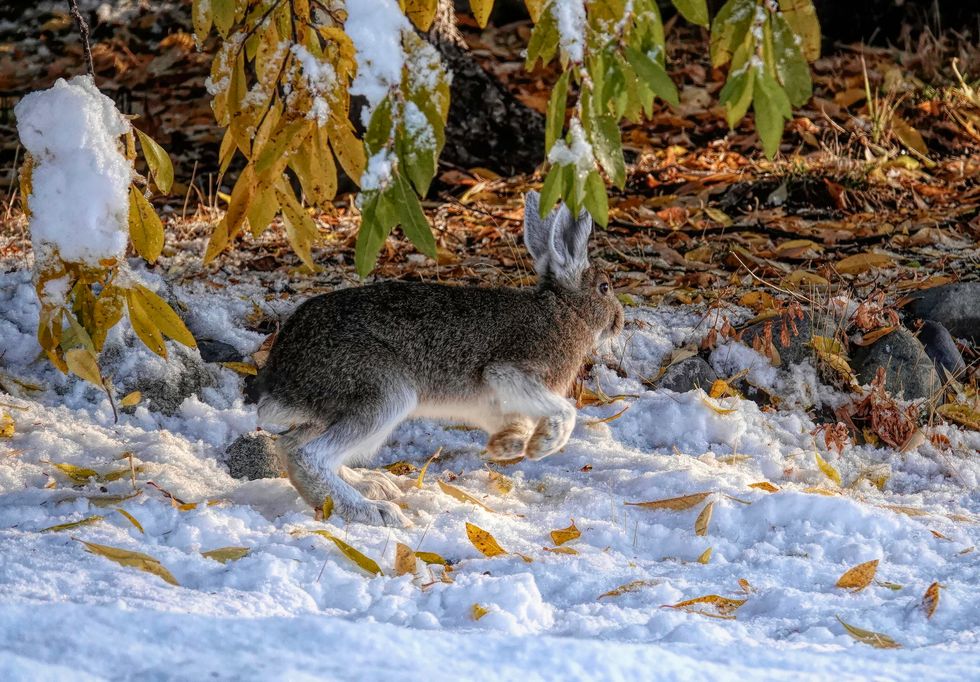
Snowshoe hard in Alaska. (Credit: JLS Photography - Alaska)
In a study of mountain hares, Lepus timidus, in Norway, researchers reviewing one 12-year period from 2003 to 2014 also found that the abundance of mountain hares decreased in years when snow cover was short-lived and the loss was even greater in areas with lots of predators.
From east to west, things don't look good for the milk-white hares.
However, Zimova and her colleagues are exploring the potential for another crucial adaptation strategy—the hare's ability to adjust the timing of when it switches to brown or white.
"The availability of light is the main trigger, and that starts this whole cascade of shedding and growing a new coat," she explained to EHN. "But the fine-tuning of it—how quickly or slowly that happens—can be adjusted based on temperature and snow cover."
In early studies, Zimova didn't believe that the hares had much control over when molting occurred. But more recent investigations revealed that the hares have more plasticity than originally thought.
Zimova has found that if the air temperature is really cold in March or April, the hare's reversion to brown will be delayed—similar to how a plant might hold off on flowering.
"But there's still a limit to how much it can be tweaked—about three weeks. It's not enough to avoid the mismatch altogether in years with really low snow cover," she said.
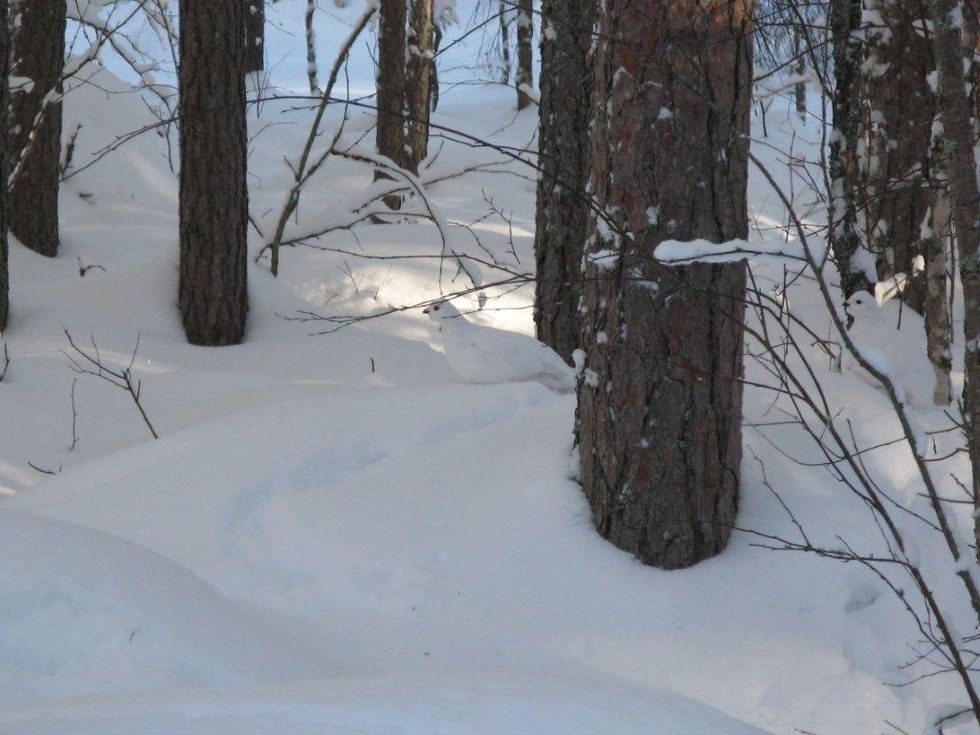
Can you spot the willow ptarmigan? (Credit: Markku Gavrilov)
The potential loss of “a beautiful, original bird”
Winter camouflage isn't limited to mammals; some birds also swap out their brown plumage as cold weather arrives.
The willow ptarmigan, or willow grouse, Lagopus lagopus, makes its home in the birch forests and tundra of Europe, Canada, Alaska, and Siberia. In Finland, the willow ptarmigan is found in the Arctic and sub-Arctic, but also in the country's central and southern boreal forests where they often dwell near mires and bogs.
Since the 1960s, this southerly population of willow ptarmigan has been declining, often tracking closely with the human drainage and afforestation of peatlands. But scientists suspect that a mismatch in camouflage may also be contributing to the bird's demise in more recent decades.
In a study published earlier this year in Scientific Reports, researchers at the Natural Resources Institute Finland dug through 21 years of willow ptarmigan census data, predator abundance data, and local daily snow depth measurements to see if they could unearth a phenological camouflage mismatch contributing to the bird's decline.
Snow typically arrives in October and November and disappears by May in Finland. They found that "there was a quite clear result that the decline of the species was strongest at the sites where, and during the specific years when the preceding April was most snow-free," Markus Melin, lead author of the study, told EHN.
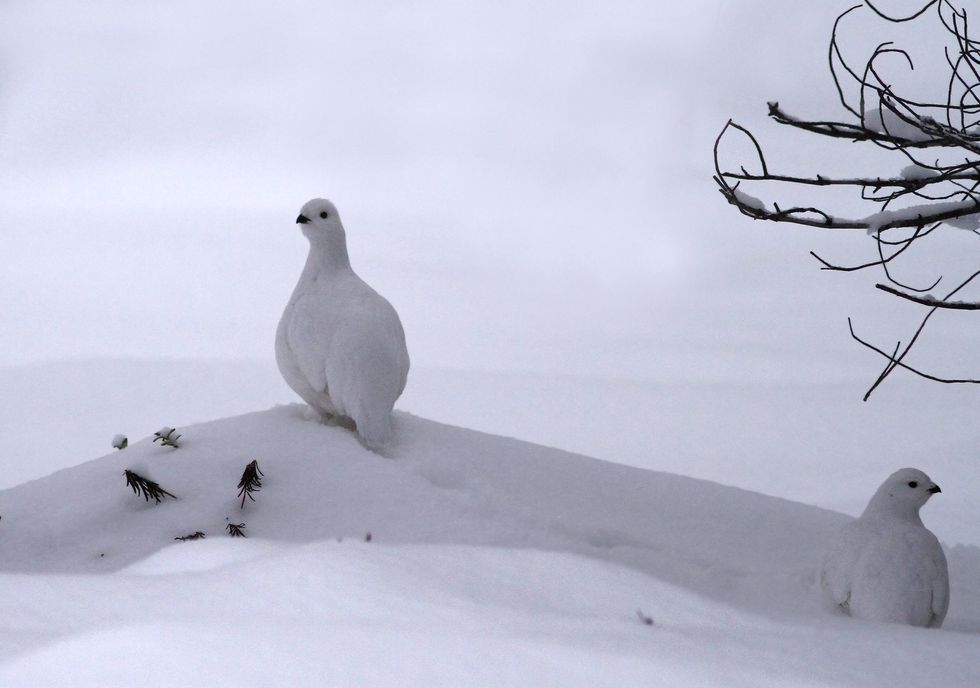
The willow ptarmigan, or willow grouse, Lagopus lagopus, makes its home in the birch forests and tundra of Europe, Canada, Alaska, and Siberia. (Credit: Victor)
According to their analysis, each snow-free day in April caused a population decline of 3.1 percent. Comparatively, a lack of snow in the autumn did not have the same severe repercussions for the birds.
"In the autumn, the birds are more mobile," said Melin. "But in springtime, the females are settling into their nesting sites which makes them more vulnerable. And the males are more careless because they're getting ready to breed."
The stark white birds against the dark ground, therefore, are an easy target for predatory goshawks which dine on the ptarmigans in abundance. During snow-free years, Melin noted scientists found an excessive amount of ptarmigan bones and feathers in goshawk nests.
Saving the southern willow ptarmigan will be tricky. Finland should continue its conservation efforts that restore peatlands, asserted Melin, as the birds are efficient breeders and have been found to breed in these restored areas.
The loss of snow cover, however, is predicted to worsen. In southern and central Finland, "all projections point to more and more snow-free seasons," said Melin, which would likely mean the loss of "a beautiful, original bird."
Weasels “are waiting for months for the first snow”
In northern ecosystems, weasels play the role of both predator and prey. These slinky animals will feed on small rodents, like mice and voles, as well as birds, frogs, fish, and eggs. But they're also hunted by foxes, pine martens, and birds of prey.
There are three species in the mustelidae family that molt between the seasons: long-tailed weasel, least weasel, and stoat.
In Poland's Białowieża Forest, scientists have been studying the least weasel, Mustela nivalis, which occurs in two varieties: one subspecies that stays brown year-long, and another that adopts winter white camouflage.
Even under normal circumstances, between 80 and 90 percent of the population is killed by predators during the winter. The weasels often make up for this loss with high reproductive rates, giving birth to kits twice a year.
But like elsewhere in the world, winter snow cover isn't what it once was. Typically snow arrives in December and lasts through the end of March. "Last winter, there was no almost no snow at all," Karol Zub, a biologist at the Mammal Research Institute of the Polish Academy of Sciences, told EHN. "And the snow that was there was in such a thin layer it didn't cover the weasels; they needed at least five to six centimeters. It was patchy and not a perfect background for camouflage."
Zub and his colleagues have found that the white subspecies has been declining in Białowieża Forest as snow cover decreases. "The problem is that they are turning white at the beginning of November. The air temperatures are similar to what they were 20 years ago so it's still cold. The day is shorter. The signal for molting is the same. But then they are waiting for months for the first snow."
During that time, the weasels are easily hunted by larger animals.
The one thing that might save the weasels from a snowless future would be if air temperatures were to warm in November as well. That would delay the molt, which Zub said is slowly beginning to happen in the forest.
But other researchers wonder if there could be another solution.
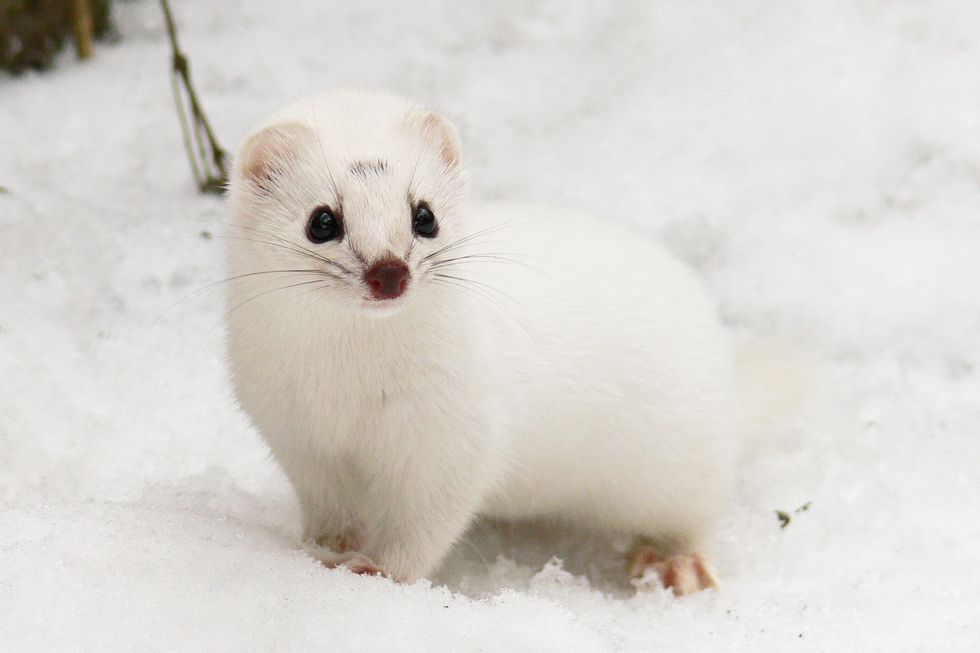
In northern ecosystems, weasels play the role of both predator and prey. (Credit: Karol Zub)
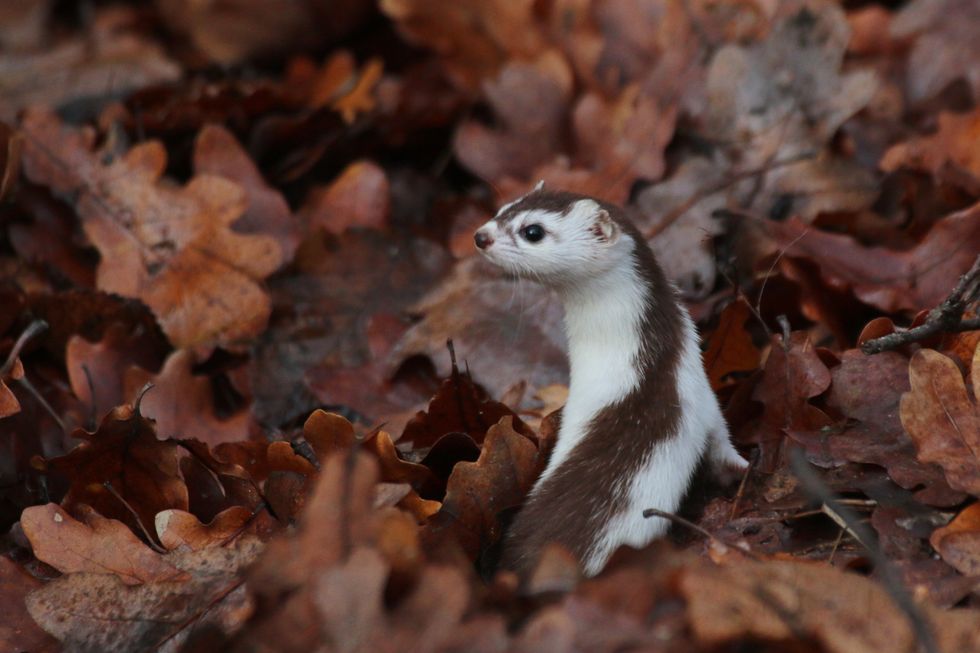
The weasels often make up for predation loss with high reproductive rates, giving birth to kits twice a year. (Credit: Karol Zub)
Adaptation by natural selection
At a University of Montana laboratory, scientists are investigating whether winter-white species could adapt via evolutionary rescue—the process whereby evolutionary adaptation occurs fast enough to allow the population to recover before they disappear.
Already, some snowshoe hare populations no longer turn white in winter. "Those are in areas with less snow, or unpredictable snow, in places like Washington and Oregon," said Zimova. "But we don't know when or how these [populations] arose." This is the next critical stage of research.
Jeff Good, an evolutionary biologist and director of the University of Montana lab, is using a genetic approach to understand the potential for adaptive response in hares. He hopes to map out what determines the frequency and the locations of different camouflage strategies. Anecdotally, scientists have observed snowshoe hares in all different color phases on a single day in Montana, suggesting that the animals aren't all molting at the same rate.
Right now, the lab is in the early stages of figuring out the specific genes and genetic changes that determine what makes a hare brown or white during the winter. "The difference between brown and white is encoded in a single gene that involves pigmentation," Good told EHN. "It seems to be a relatively simple switch that determines if you grow out a white coat or a brown coat."
The winter-brown gene is a recessive trait, which means that many winter-white hares have the potential to make a winter-brown hare if they were paired with another winter-white hare that carried the same recessive brown gene. In Montana, less than about 1 percent of the snowshoe hare population stays brown, but Good's genetic testing reveals that the adaptation potential for winter-brown could be greater than what is visible to the naked eye.
Whether or not natural selection works depends on how that winter-brown gene is spread around populations. Even though the variation for winter-brown exists, it might not exist in a sufficient amount for populations to actually respond at a large scale.
In places like Poland's Białowieża Forest, such natural selection could be easier for the least weasel, since one abundant variety already stays brown year-long.
Still, Good thinks it's likely that this winter-brown adaptation will become more prominent as snow cover decreases. The hares that turn white will be killed off in higher numbers, selecting for those that remain brown year-long. However, he cautions that natural selection might not work rapidly enough to respond to loss of snow. But, "it tells us how these populations could possibly adapt."
Gloria Dickie is a journalist based in British Columbia, Canada. Her work appears in The New York Times, National Geographic, The Guardian, Science News, and Scientific American. Follow her on Twitter or read more at www.gloriadickie.com.
Banner photo: Snowshoe hare. (Credit: Scott Mills Lab, University of Montana)







